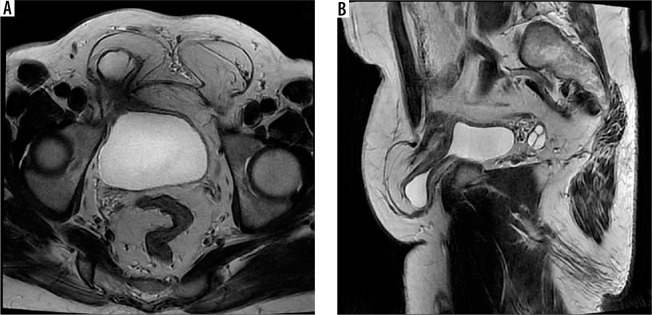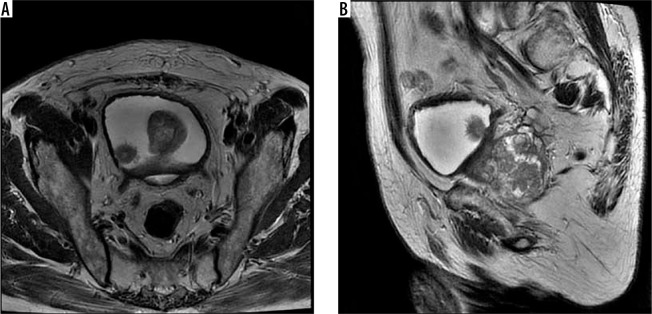Evaluation of the frequency of incidental findings and their clinical significance in multiparametric prostate magnetic resonance imaging examination.
IF 1.6
Q4 RADIOLOGY, NUCLEAR MEDICINE & MEDICAL IMAGING
Polish Journal of Radiology
Pub Date : 2022-07-21
eCollection Date: 2022-01-01
DOI:10.5114/pjr.2022.118312
引用次数: 1
Abstract
Purpose Conventional diagnostic methods have limitations in the diagnosis of prostate cancer (PCa); therefore, the use of multiparametric magnetic resonance imaging (mpMRI) in PCa has become widespread. We aimed to determine the frequency of IF detected in the mpMRI examination according to organ distribution and clinical significance. Material and methods mpMRI examinations performed between January 2015 and 2020 based on the diagnosis or suspicion of PCa were retrospectively evaluated. IFs were divided into 2 groups, as genitourinary system and non- genitourinary system findings. In addition, IFs were also evaluated in 2 groups, as clinically significant and clinically non-significant. The patient population was divided into age ranges, and the frequency of IFs in these age ranges and their clinical significance were recorded. Results The mpMRI examinations of 426 patients revealed a total of 321 Ifs, comprising 212 (49.8%) genitourinary (41.1%) and 189 (58.9%) extragenitourinary findings. The mean age of the patients was 63.53 ± 7.89 years. As the age increased, the rate of IFs increased (p = 0.001). However, there was no increase for the 75-year-old group compared to the 65-74-year-old age range (p = 0.853). There were a total of 22 (6.9%) clinically significant Ifs – 4 associated with the genitourinary system and 18 extragenitourinary. Conclusions Although the rate of clinically significant IF was only 6.9%, this rate was high in patients, especially in those over the age of 65 years. It should be kept in mind that the early detection of these findings in the asymptomatic period will increase the survival and successful treatment of patients.



多参数前列腺磁共振成像检查中意外发现频率的评价及其临床意义。
目的:常规诊断方法对前列腺癌(PCa)的诊断存在局限性;因此,多参数磁共振成像(mpMRI)在前列腺癌中的应用已经变得广泛。我们的目的是根据器官分布和临床意义确定在mpMRI检查中检测到IF的频率。材料和方法:回顾性评价2015年1月至2020年1月诊断或怀疑前列腺癌的mpMRI检查。IFs分为泌尿生殖系统和非泌尿生殖系统两组。此外,还对两组患者的IFs评分,分为临床显著性和临床无显著性。将患者人群按年龄分组,记录各年龄段IFs发生频率及临床意义。结果:426例患者mpMRI共发现321个Ifs,其中泌尿生殖系统212个(49.8%),泌尿外系统189个(58.9%)。患者平均年龄63.53±7.89岁。随着年龄的增加,IFs发生率增加(p = 0.001)。然而,与65-74岁年龄组相比,75岁组没有增加(p = 0.853)。共有22例(6.9%)具有临床意义的Ifs - 4与泌尿生殖系统相关,18例与泌尿生殖系统外相关。结论:虽然临床显著性IF的发生率仅为6.9%,但这一比例在患者中很高,尤其是在65岁以上的患者中。应该记住,在无症状期早期发现这些发现将增加患者的生存和成功治疗。
本文章由计算机程序翻译,如有差异,请以英文原文为准。
求助全文
约1分钟内获得全文
求助全文
来源期刊

Polish Journal of Radiology
RADIOLOGY, NUCLEAR MEDICINE & MEDICAL IMAGING-
CiteScore
2.10
自引率
0.00%
发文量
0
 求助内容:
求助内容: 应助结果提醒方式:
应助结果提醒方式:


